How to sharpen hedge trimmer blades: 5 easy steps
To keep your hedge trimmer blades sharp and powerful

If you want sharp and shiny blades, you need to know how to sharpen hedge trimmer blades efficiently and effectively. Dull or blunt trimmer blades simply won’t cut it (literally). Poorly maintained blades will mean more work for you every time you tackle your yard and, your hedges, bushes and greenery won’t thank you either.
Blunt blades won’t cut as well as clean, sharp blades and will rip rather than cut your hedge - leaving the ends of branches exposed to possible disease. If you’re going to invest in the best hedge trimmers, you'll want to keep them in their best condition.
- Heavy duty gloves
- Metal file
- Clamp
- Power grinder (optional)
If you don’t look after your trimmer blades it's not only your hedge that will suffer. You will be putting more stress on the motor of your hedge trimmer, weakening its longevity and giving yourself extra work for a decent result.
Here we give you the lowdown on how to sharpen hedge trimmer blades, plus the best methods for cleaning and maintaining the blades to keep them in tip top condition.
Quick steps: How to sharpen hedge trimmer blades
- Clean the blades
- Align the blades
- Choose your sharpening tool
- Sharpen trimmer teeth
- Finish up
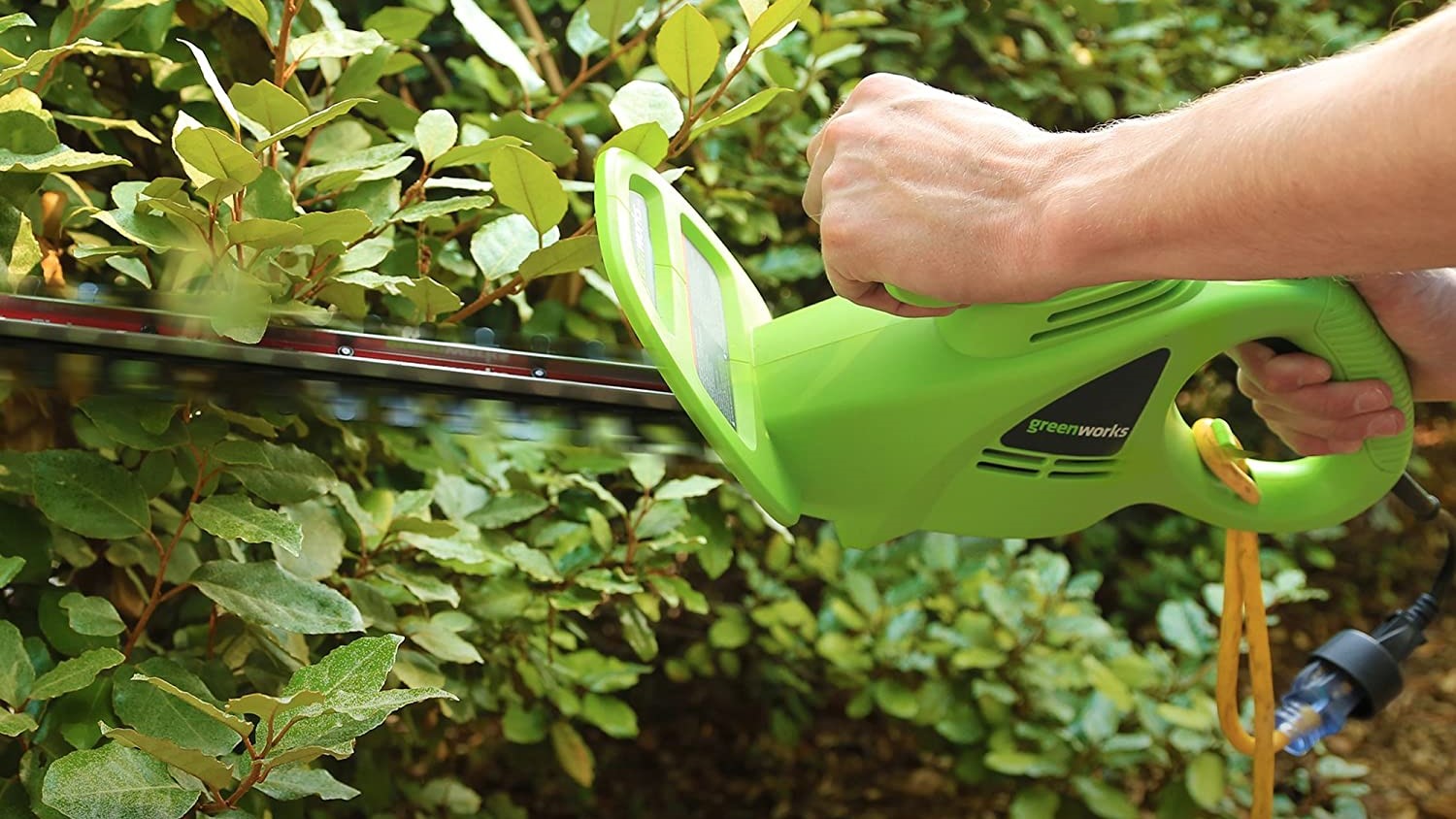
Step by step guide: How to sharpen hedge trimmer blades
1. Clean the blades

Before you start, don't forget to put on your heavy duty gloves and make sure no power is going to the trimmer. If you have a shiny new hedge trimmer, give the blades a wipe with a damp soft cloth to help remove any debris or sap. For older hedge trimmers you might need the help of a specialist cleaner or a fine grade sandpaper to get rid of stubborn sap.
If you're looking for heavy duty gloves, the WZQH Leather Work Gloves (available at Amazon) are ideal for protection when working with the trimmer blades.
2. Align the blades
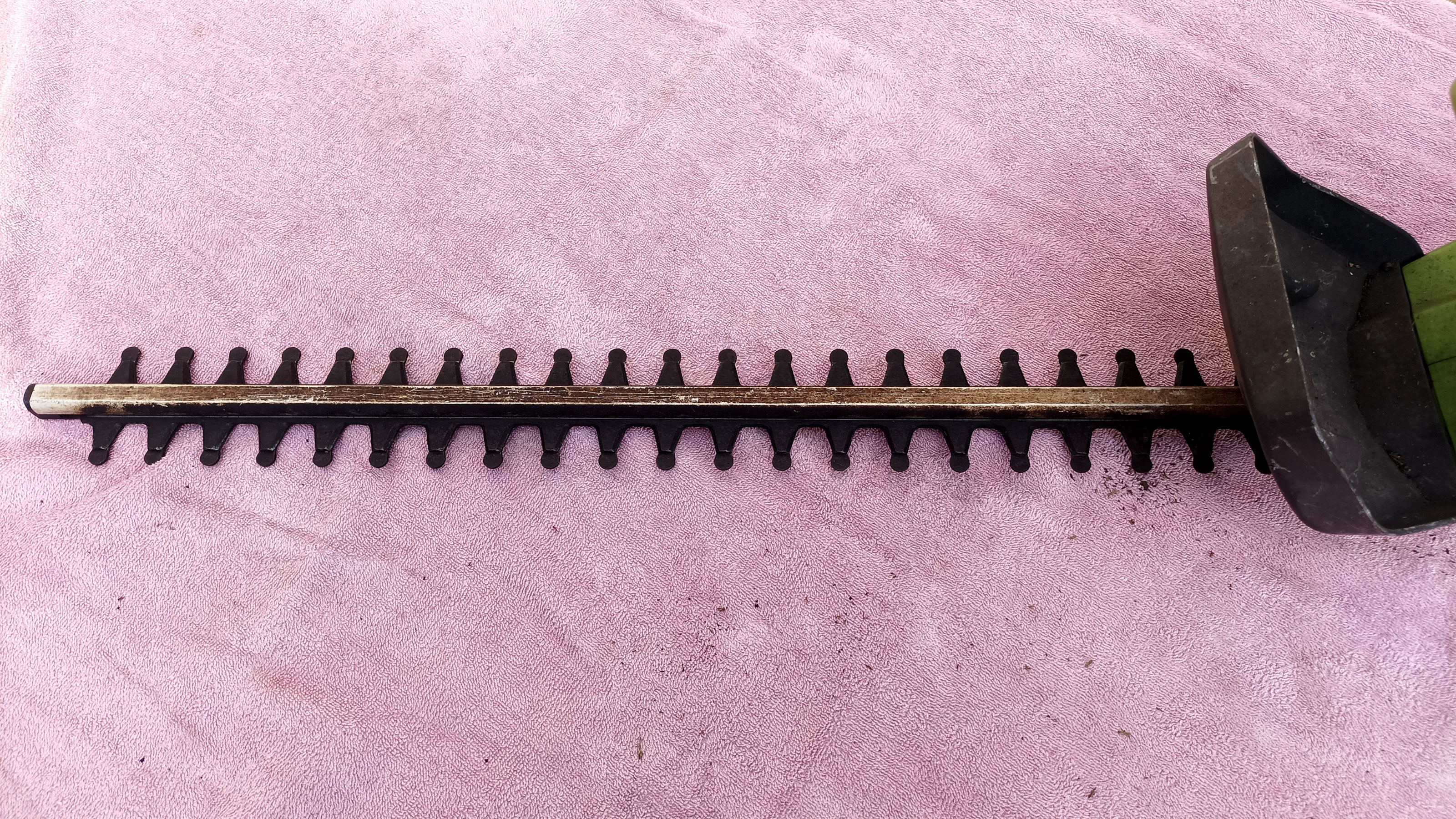
Hedge trimmers have dual action blades with one set on top of another blade. Before you can sharpen you need to align the two sets of blades so that you have easy access to the teeth for sharpening. You can do this by switching on and off until they align. Or use the plastic handle of a screwdriver to gently ease the blade into alignment.
3. Choose your sharpening tool
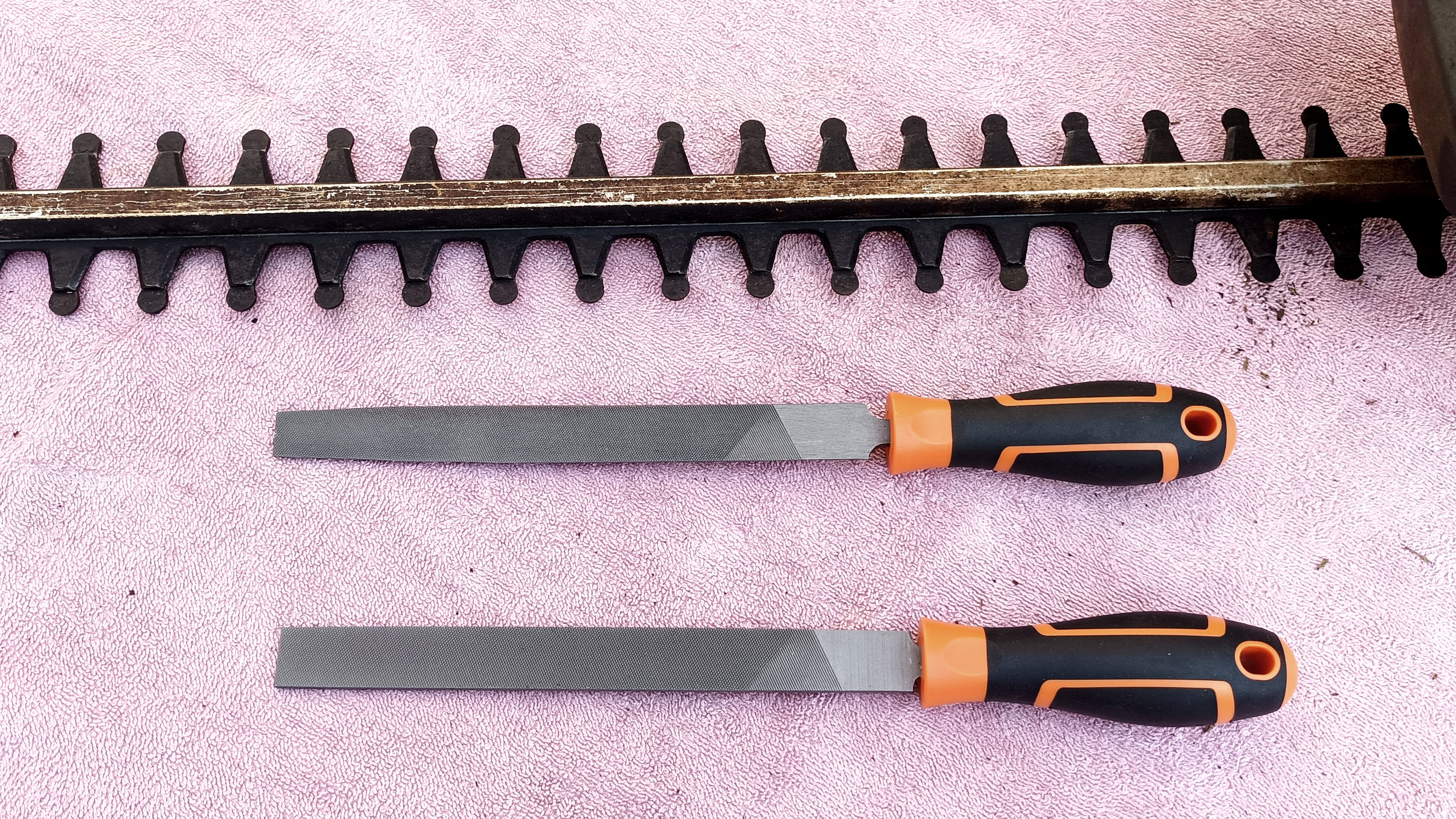
There are two options for sharpening the teeth: a flat metal file or a power grinder. We recommend using a metal file, especially if you've never used a power grinder before. Plus, there's a lesser chance of things going wrong with a metal file. Choose a metal file that is around the same width as the teeth on your hedge trimmer blade.
We recommend the WORKPRO 10” Flat File (available at Amazon), the everyday metal file is a great choice for blade sharpening.
Another option is the DEWALT Angle Grinder (available at Amazon). This will make the job quicker, but ideally only use it if you have experience with angle grinders as there's the risk of grinding too much off the blade.
4. Sharpen trimmer teeth
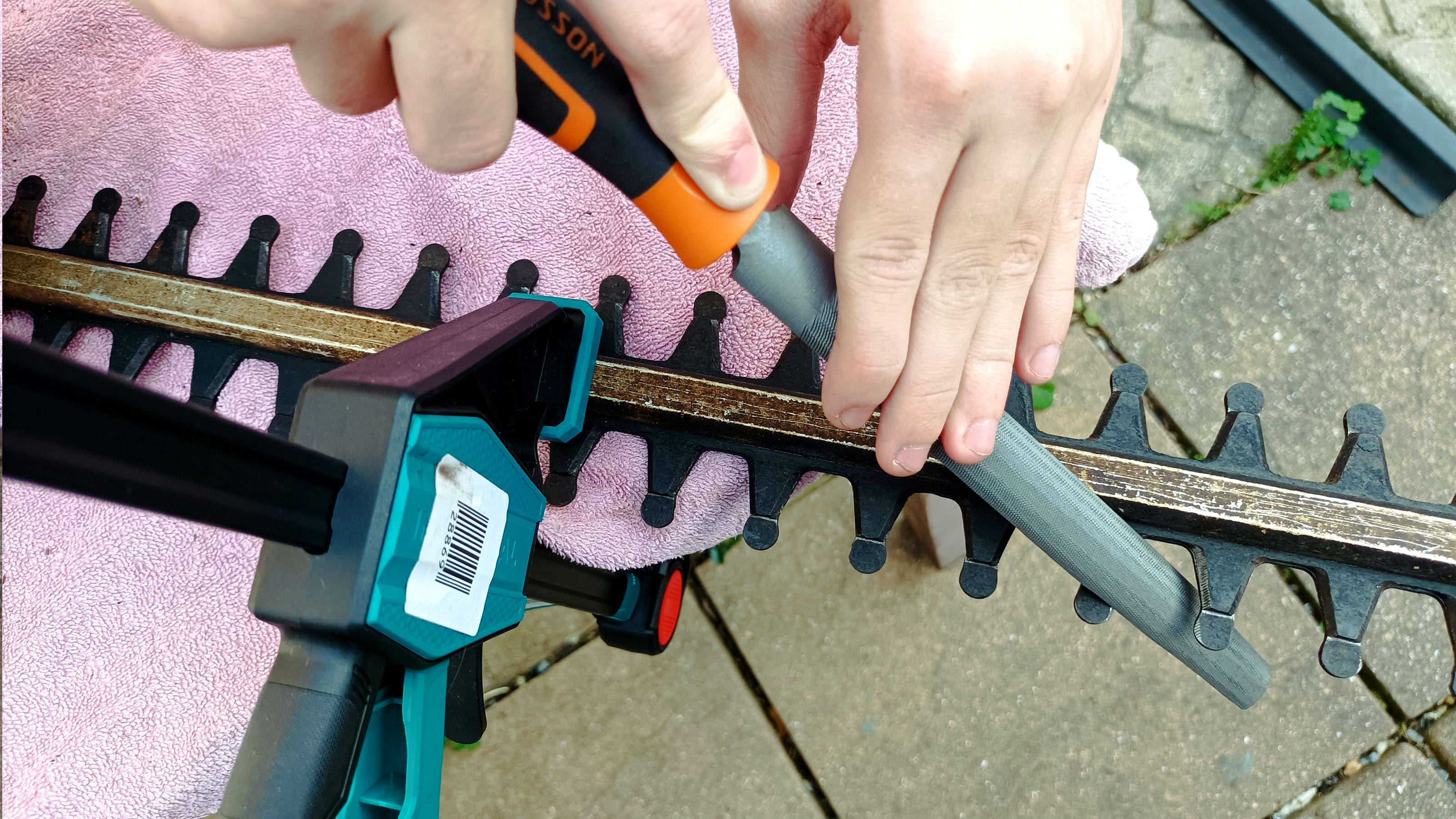
Place your hedge trimmer on a steady flat surface - like a table or workbench - and clamp the blade so it is secure and won't move while sharpening. Now get your metal file and place it at the same angle as the edge of the tooth and push down (not up). Repeat this three or four times until sharp. Now do the same for each tooth on the blade until all are done.
Bar clamps like these IRWIN QUICK-GRIP Clamps (available at Amazon)- or similar - are ideal for clamping the trimmer blade to a sturdy flat surface to help ensure even sharpening.
5. Finish up
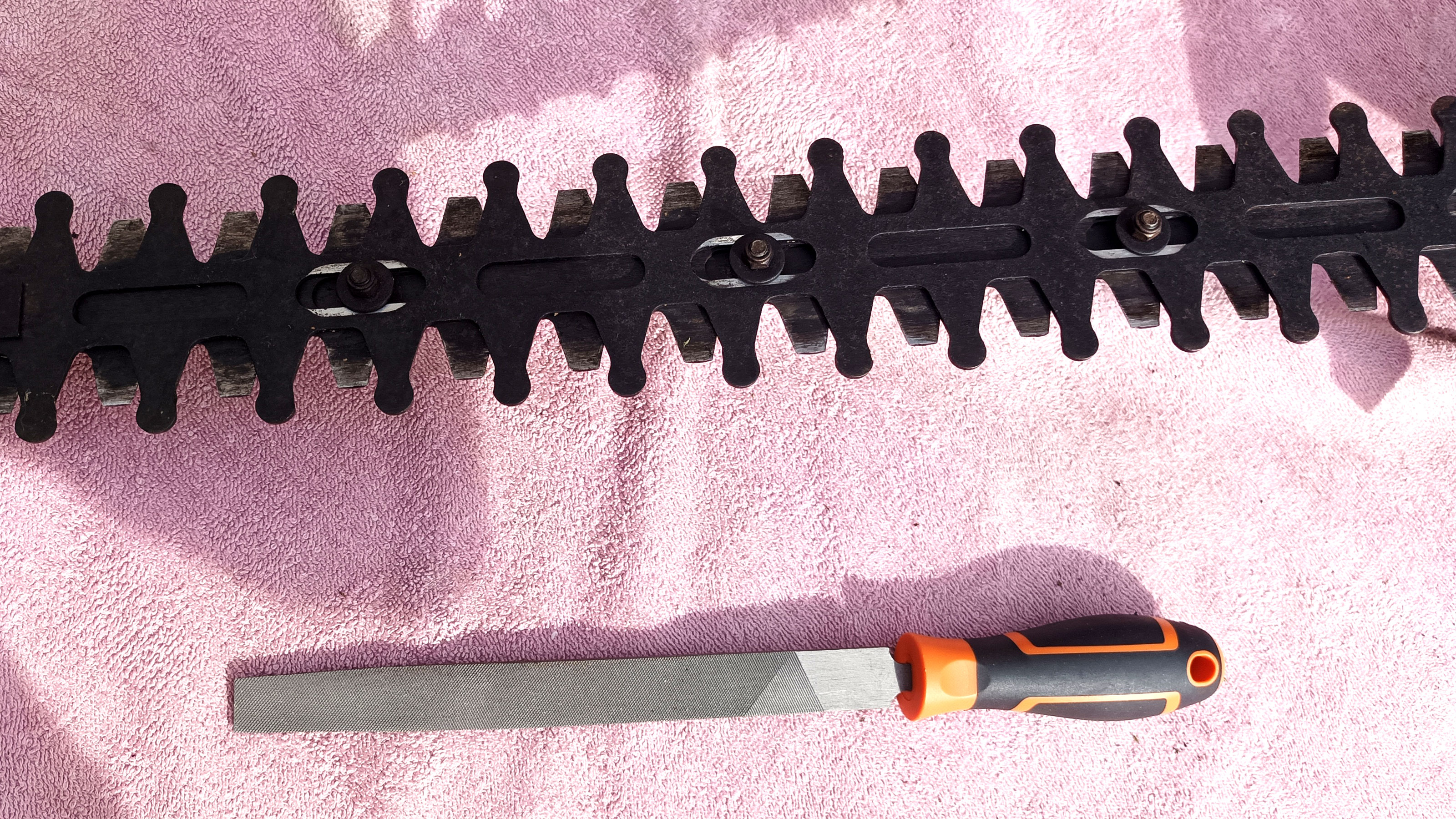
Now turn over the hedge trimmer and unalign the teeth so you can see the underside of the top blade. Now you will be able to see any burr on the teeth, or nicks that need dealing with. Gently run the metal file across the back of each tooth to clean up and finish. Now wipe off any loose metal dust and lubricate.
How to sharpen hedge trimmer blades: FAQs
How to clean hedge trimmer blades
Hedge trimmer blades will attract dirt, debris and plant sap every time you use them. This will build up over time and create an unwanted layer on the surface of the blades which will make them less efficient.
If you’ve got a brand new hedge trimmer with shiny new blades you want to be cleaning them from the first time you use them. A good wipe down with a cloth and warm soapy water will be good enough for regular cleaning. Make sure to wipe dry. If anything gets stuck between the blades that the cloth won't remove, get a toothbrush to help loosen it and get rid of it.
If the blades have been left for a while you can use fine grade sandpaper to get rid of any build up on the blade or use a specialist cleaner.
What is the best cleaner for hedge trimmer blades?
The best budget busting cleaner for blades is warm water and a squirt of liquid dish soap, which you will already have in your home. Another budget option is a fine grade sandpaper used with an oil/lubricant.
But you can buy specialist blade cleaners like Echo Red Armor Hedge Trimmer Blade Cleaner and Lubricant (available at Home Depot). Like most specialist cleaners it will gently dissolve resin and sap and help in the removal of rust.
How often should you oil hedge trimmer blades?
To prolong the life of your trimmer blades they need to be oiled regularly. Ideally after every use, it doesn't take long and will help ensure an efficient cut next time out.
First, make sure the hedge trimmer has no power going to the blades. Use a lightweight machine oil and squeeze a small drop on each blade. Then power up and switch on for a few seconds to distribute the oil. Alternatively, spray WD-40 onto a cloth and wipe along the blades.
Final thoughts
Reviews
Echo eForce DPB-2500 review: a leaf blower as a snow removal tool?
Opinel Hand Pruning Shears review: are these the world’s most stylish secateurs?
STIHL HSA 60 Hedge Trimmer review: a battery-powered hedge trimmer that "gets the job done"
STIHL FSA 200 R String Trimmer review: quirky yet powerful, efficient and battery-powered
Husqvarna Combi Switch 330iK review: A versatile, all-in-one lawn tool
ENHULK 58V 16” String Trimmer review
Husqvarna Hedge Master 320iHD60 review: a cordless hedge trimmer on a mission to master hedges
Keeping your hedge trimmer blades sharp means a more efficient cut every time you use them. It isn’t difficult to sharpen trimmer blades once you have all the tools. But you need to make sure that you sharpen regularly. When you notice that your trimmer blades are struggling to cut, it's time to sharpen them.
It's essential that you clean and maintain the trimmer blades in between each use. This will help stop build up of debris and sap on the blades and keep them operating efficiently for longer.
Sign up to receive the latest news, reviews, buying guides and deals direct to your inbox
